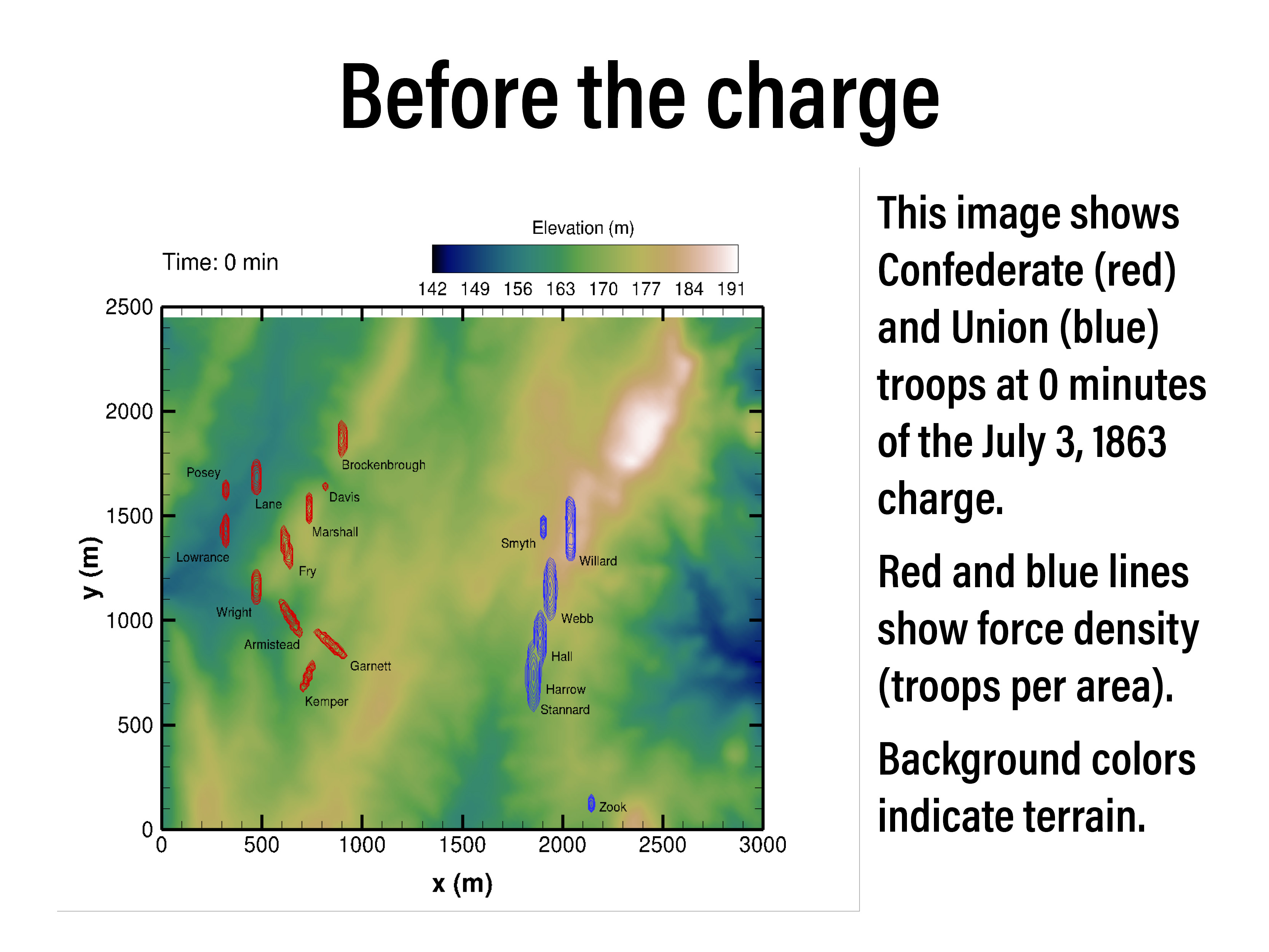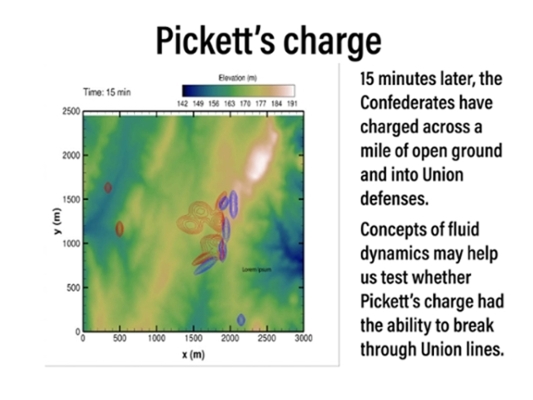
Simulating Military Conflict with a Continuous Flow Model: Gettysburg
FORCES is excited about blending military history and technology in manner that may have applications for future commanders and staffs. Jon Poggie, FORCES director of military analytics and computational conflict dynamics, is adapting his expertise in fluid dynamics to the Civil War battle of Gettysburg. Poggie is an associate professor in Purdue's School of Aeronautics and Astronautics.
Poggie's model depicts large formations of troops as a kind of fluid, where the individual soldiers are analogous to molecules. Building on the 100 year old (1914!) attrition modeling of F.W. Lanchester, he adds continuous flow modelling to military units and subunits, plus fire and melee combat. As proof of concept, for several reasons he chose Pickett’s famous charge on the last day of Gettysburg: a relatively small number of soldiers in limited time and space, all moving on foot across an open field.
Poggie will then move on the more complex examples of modern warfare, including wheeled and tracked vehicles, plus larger organizations and greater expanses of time and space. FORCES’s goal is to produce more than just a new look at military history, but also to streamline the military decision making process. Today’s battlefields are subject to the same information overload we see everywhere in the 21st century – if not more. In addition to old-fashion inputs such as reports over the radio, a bewildering amount of data comes in from diverse sources as Bluetooth and satellites. We see Poggie’s innovative modeling eventually simplifying and synthesizing this barely manageable mass into predictions and suggestions, thereby assisting future commanders and staffs make sense of the battlefield.
Preliminary simulation results
The images below show selected results from a very preliminary simulation of Pickett’s charge on July 3rd, 1863.
The background color contours show the terrain between Seminary Ridge and Cemetery Ridge. Red and blue lines show force density (troops per area). First we see the initial configuration of the units, based on the best available historical data for numbers and locations. As time moves forward in the simulation, Confederate forces charge eastward toward the Union defenses. Local troop density and terrain affect their speed of movement. Both close-in and ranged combat are simulated, representing rifle and artillery fire.

.
